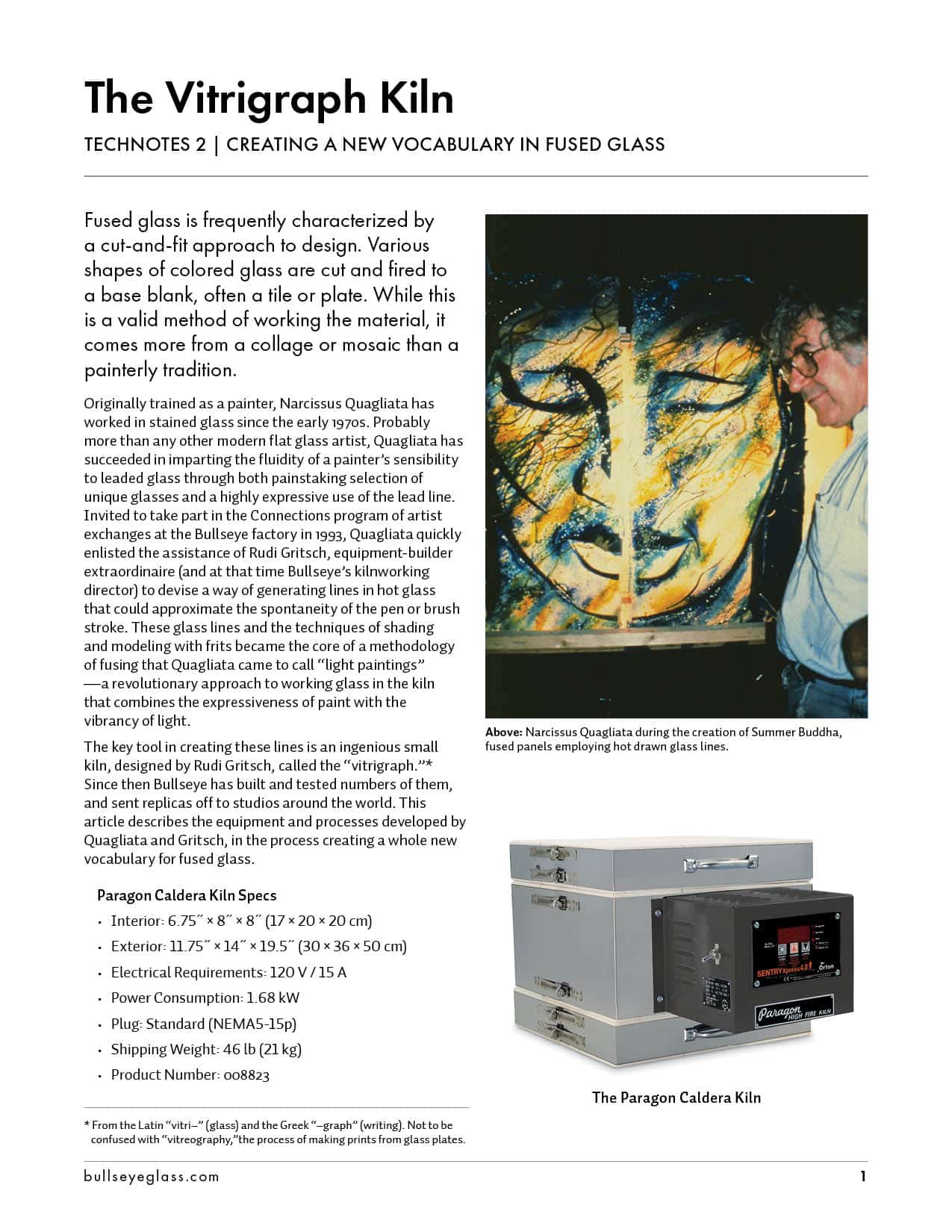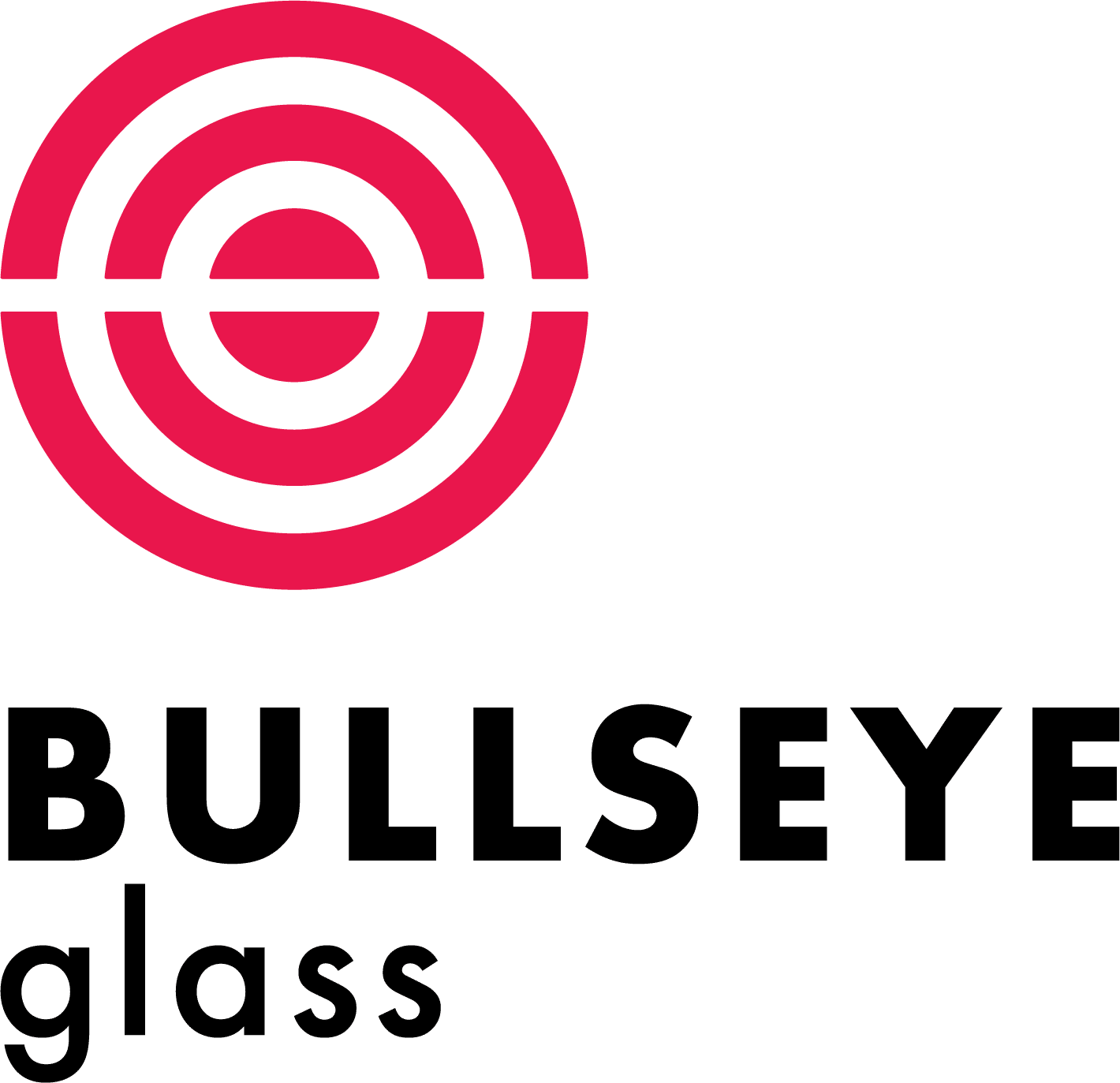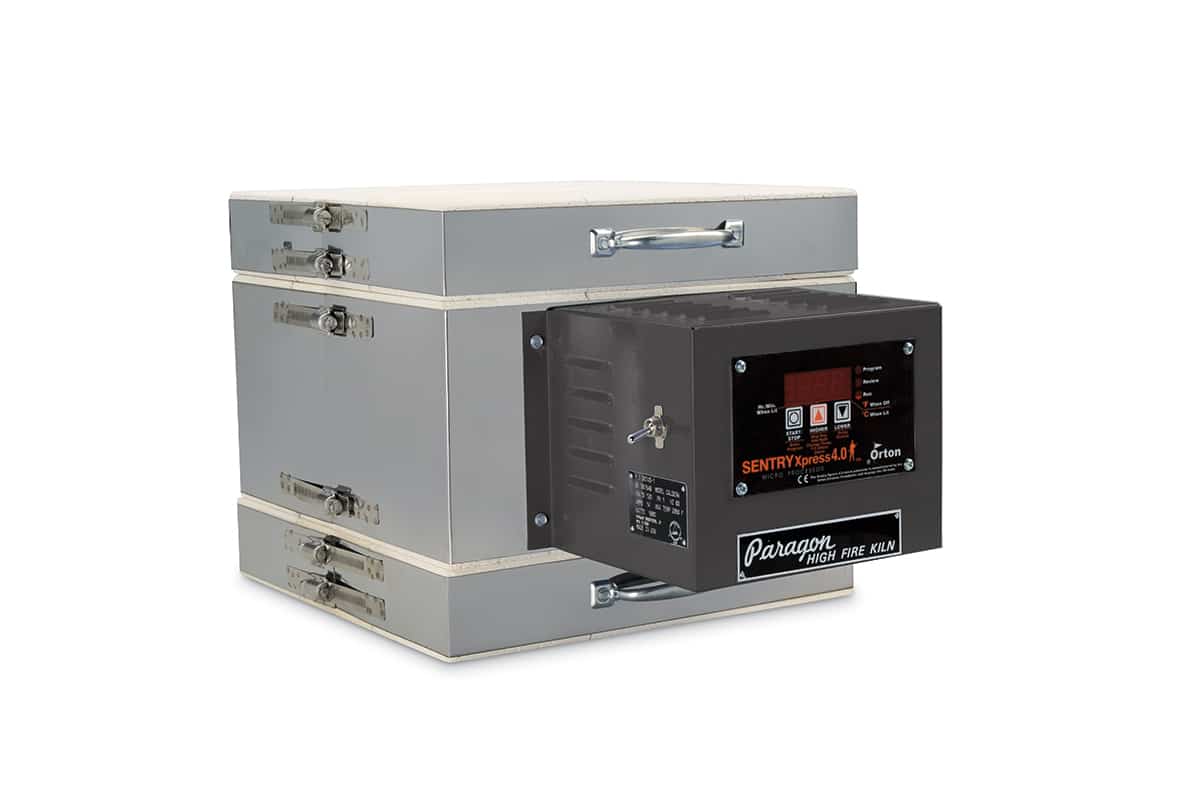A Key Tool for Painting with Light
Fused glass is frequently characterized by a cut-and-fit approach to design. Various shapes of colored glass are cut and fired to a base blank, often a tile or plate. While this is a valid method of working the material, it comes more from a collage or mosaic than a painterly tradition.
Originally trained as a painter, Narcissus Quagliata has worked in stained glass since the early 1970s. Probably more than any other modern flat glass artist, Quagliata has succeeded in imparting the fluidity of a painter’s sensibility to leaded glass through both painstaking selection of unique glasses and a highly expressive use of the lead line. Invited to take part in the Connections program of artist exchanges at the Bullseye factory in 1993, Quagliata quickly enlisted the assistance of Rudi Gritsch, equipment-builder extraordinaire (and at that time Bullseye’s kilnworking director) to devise a way of generating lines in hot glass that could approximate the spontaneity of the pen or brush stroke. These glass lines and the techniques of shading and modeling with frits became the core of a methodology of fusing that Quagliata came to call “light paintings” — a revolutionary approach to working glass in the kiln that combines the expressiveness of paint with the vibrancy of light.
The key tool in creating these lines is an ingenious small kiln, designed by Rudi Gritsch, called the “vitrigraph.”* Since then Bullseye has built and tested numbers of them, and sent replicas off to studios around the world. This article describes the equipment and processes developed by Quagliata and Gritsch, in the process creating a whole new vocabulary for fused glass.


